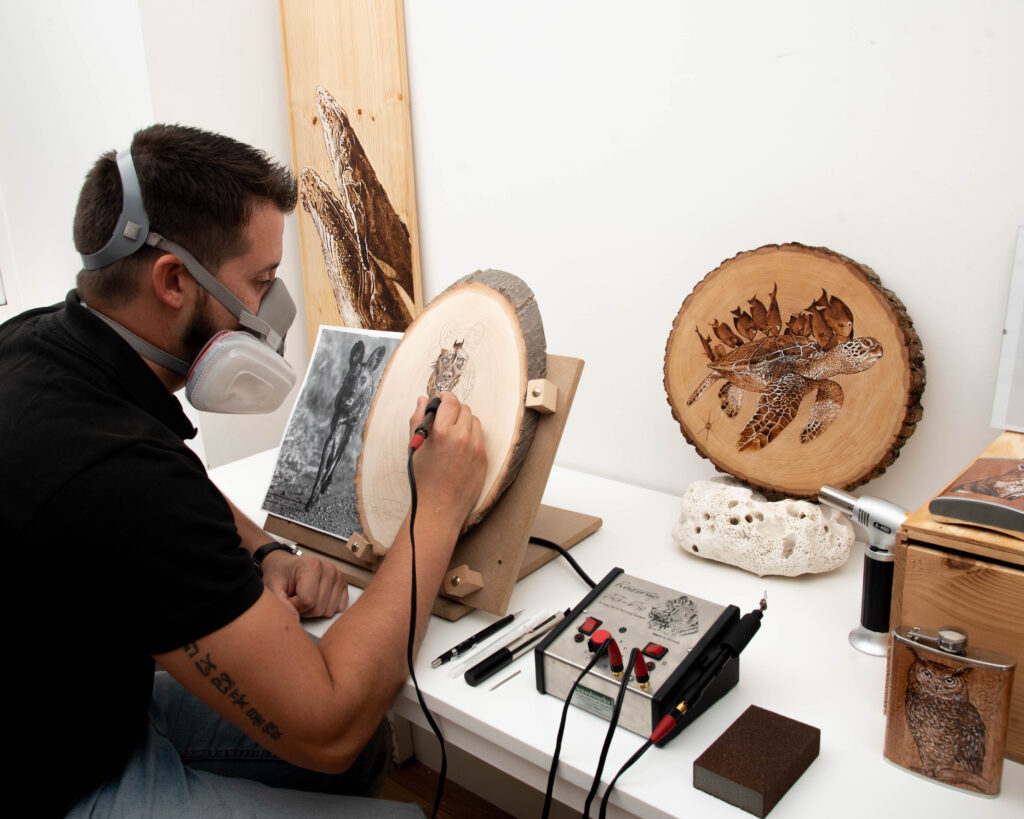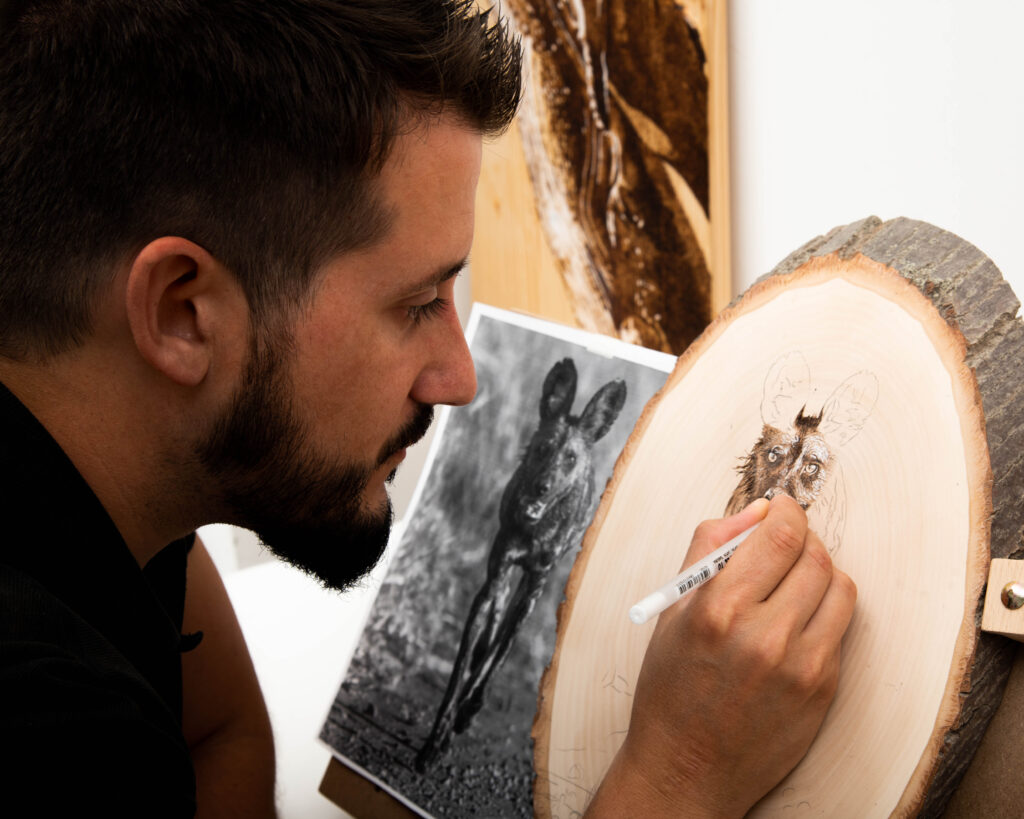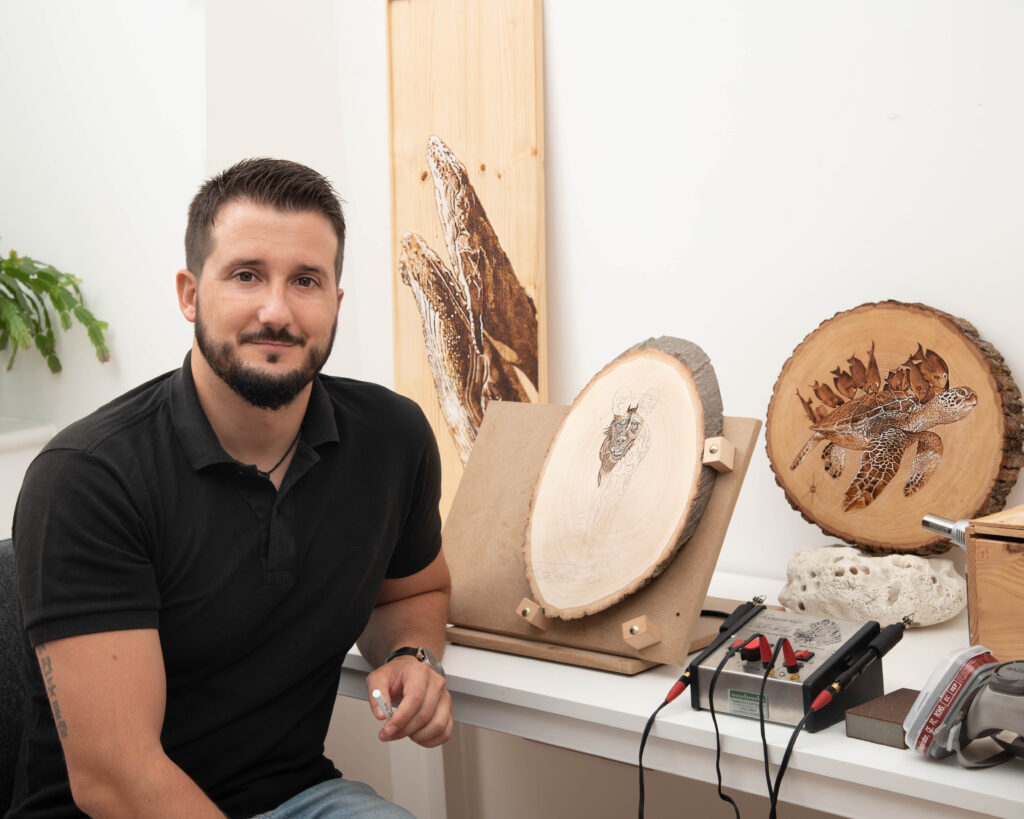Pyrography, an intricate art form on wood, involves crafting designs using a special tool known as a pyrograph. This technique allows artists to create a diverse range of shades and textures by adjusting the tool’s temperature. It uniquely blends detailed artistry while preserving the wood’s natural color, texture, and form, essentially breathing life into a natural canvas.
Originating in the 17th century and gaining prominence in the 19th century, pyrography has since become a less common technique. However, some contemporary artists continue to explore and refine this craft, pushing its boundaries and enhancing its textural depth.
The instrument used in pyrography is known as a pyrograph, with models ranging from basic, handcrafted hot wire machines to sophisticated, precision-engineered devices. These advanced instruments are specially manufactured by companies to aid artists in achieving the utmost accuracy in their work.
Georgi initially began his pyrography journey with a basic, inexpensive Soldering Pen. This tool, offering constant heat, limited his ability to create varied textures and control the burning process. Seeking a more advanced approach, Georgi researched and discovered Razertip, a Canadian company known for designing professional hot wire tools specifically for art.
He has since been using the Razertip SS-D10 model, a tool notable for its unique features not commonly found in other woodburners. One of its key advantages is the dual handpiece capability, allowing two pens to be connected simultaneously and switched between them effortlessly. This feature is especially beneficial for work that requires frequent changes of handpieces, saving both time and reducing wear on the connectors.
The SS-D10 also offers precise low-end temperature control, enhancing heat management. Georgi uses BHP Interchangeable-tip pens with this model, which are advantageous for those who need to switch or customize their own tips. This level of customization and control has significantly contributed to the refinement of his pyrography techniques.
Pyrography tips are crafted from high-quality, low-resistance nichrome wire, available in various shapes to create distinct effects and textures. There are more than 900 different models, each with its specific level of sharpness. Georgi frequently uses a custom-shaped wire tip that he fashioned himself, suitable for a wide range of applications. Occasionally, he switches to tips that offer a smoother finish or a finely detailed, feather-like texture.
The material can also vary from different types of wood, to leather, bone or even wax surface. Thick Rag paper can also be a decent medium for pyrography. From practise and also communication in the sphere of pyrography the artist came to a conclusion that the most common wood materials to use are American Basswood, Poplar , Lime and others. This is so because of the softness of the material that allows easier hot wire carving and the bright texture to give you chance for smooth and precise marks. You need to have in mind that every type of wood material has a different toxicity therefore you SHOULD BE VERY CAUSIOUS about the smoke. Different types of extractors come in use of taking the smokes away and providing a safe work environment.
Also recommended is using a heat resistant leather glove and respiratory mask.
As a last stage of giving your artwork a more complete look is using a varnish for protection and shining effect.
Be aware though that varnish reacts differently with materials and it might darken your artwork and this way to hide some of the details and shades.
Pyrography requires dedicated time but the process is fun and can be a style that you can identify yourself with and be a creator that uses only natural elements.
Happy burning!


